Intel talks shop about next-gen Lunar Lake processors: 'We will win in performance, we will win in graphics, we will win in AI'
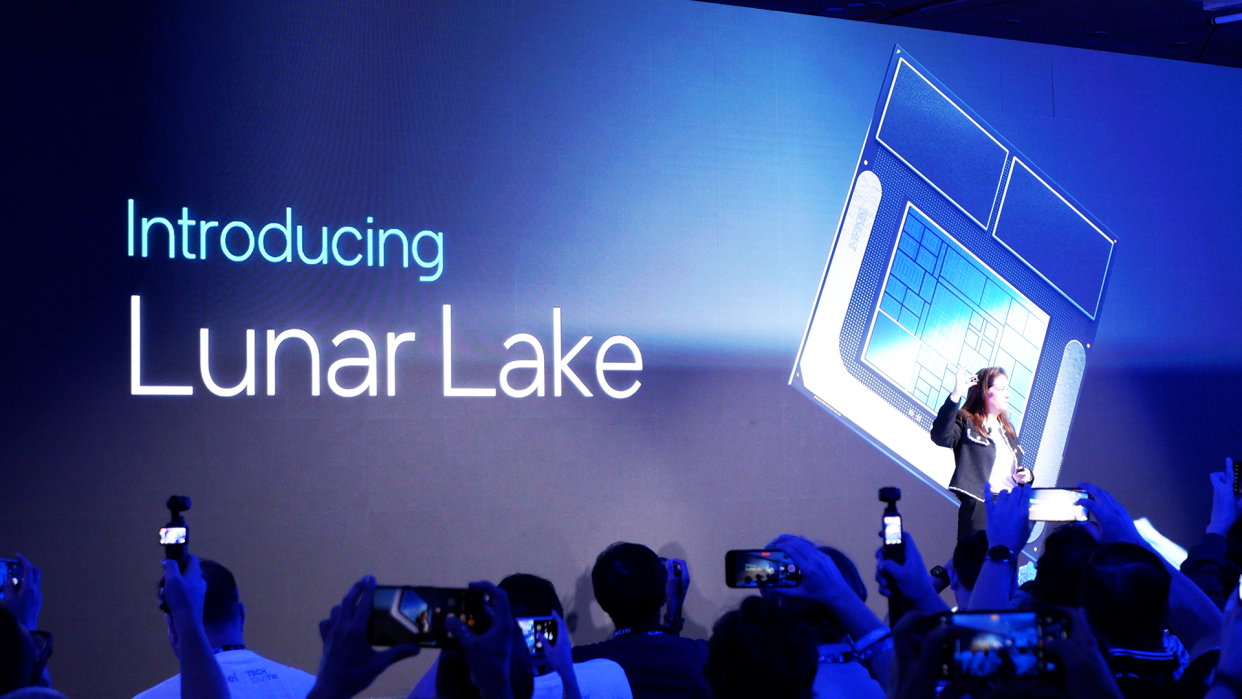
Intel has unveiled more details about its upcoming mobile CPU generation, codename Lunar Lake. To launch under the same Core Ultra umbrella as previous Meteor Lake chips, Intel has promised a few big tweaks to improve graphics, efficiency and, of course, AI.
Before we talk AI—which really is inescapable right now—let's get to the fundamentals of Lunar Lake.
This is a low-power mobile system-on-chip and one that's primarily going to find its way into thin and light laptops. That should happen around Q3 this year—Intel says it's on track to get the chips out the door on time.
Lunar Lake is a hybrid design with both P-cores and E-cores, four of each, for an eight-core total. And it's this CPU component that will see the largest shake-up between generations.
The new P-cores are built with the Lion Cove architecture, which Intel's Robert Hallock, technical marketing chief, says are wider, with higher IPC, though lower frequency than the Redwood Cove cores of Meteor Lake. These share up to 12MB of L3 cache and have Hyper-Threading disabled. That's one massive change with Lunar Lake. The E-cores supposedly are good enough to no longer require doubling the available threads on the P-cores.
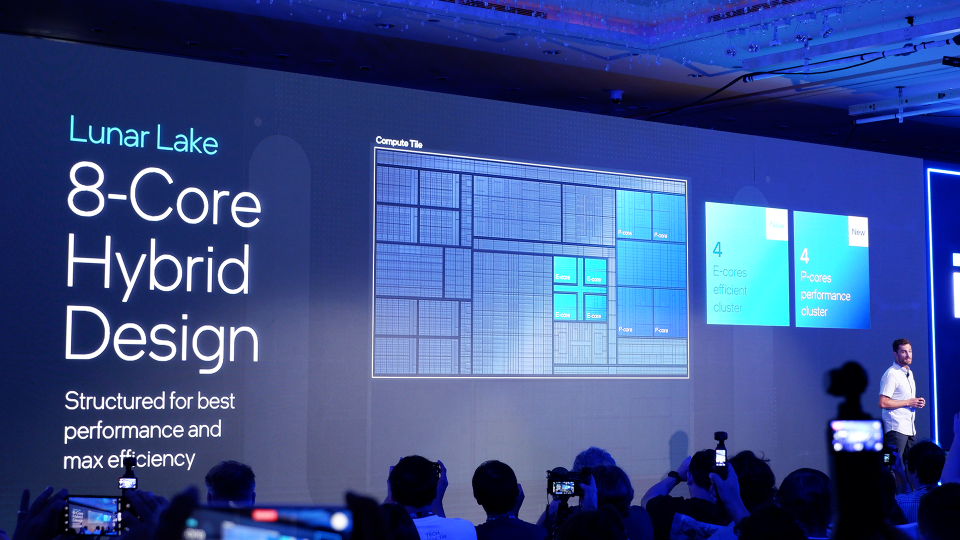
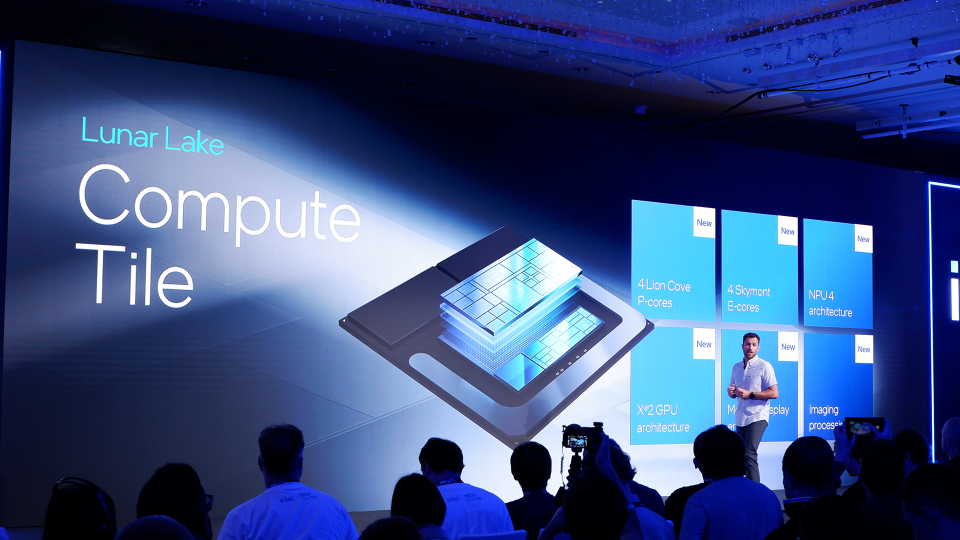
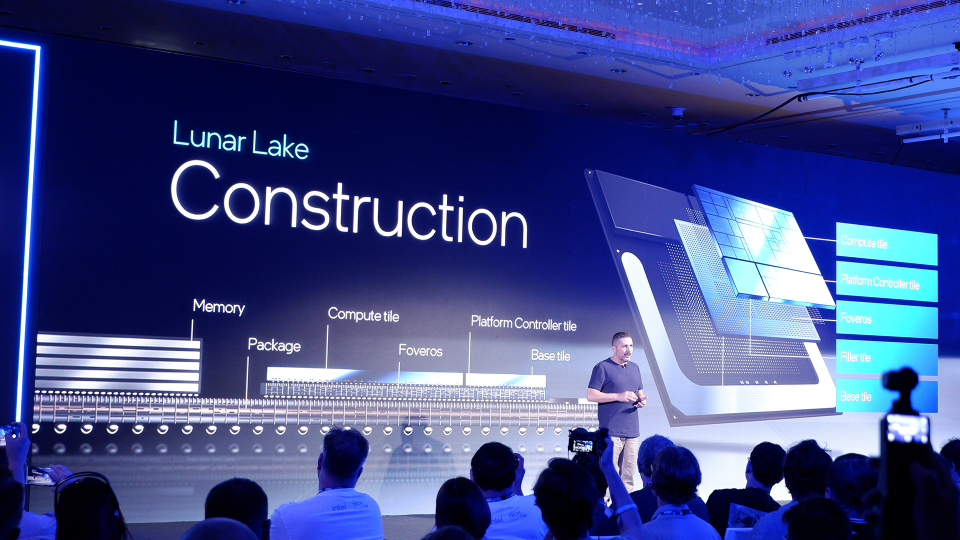
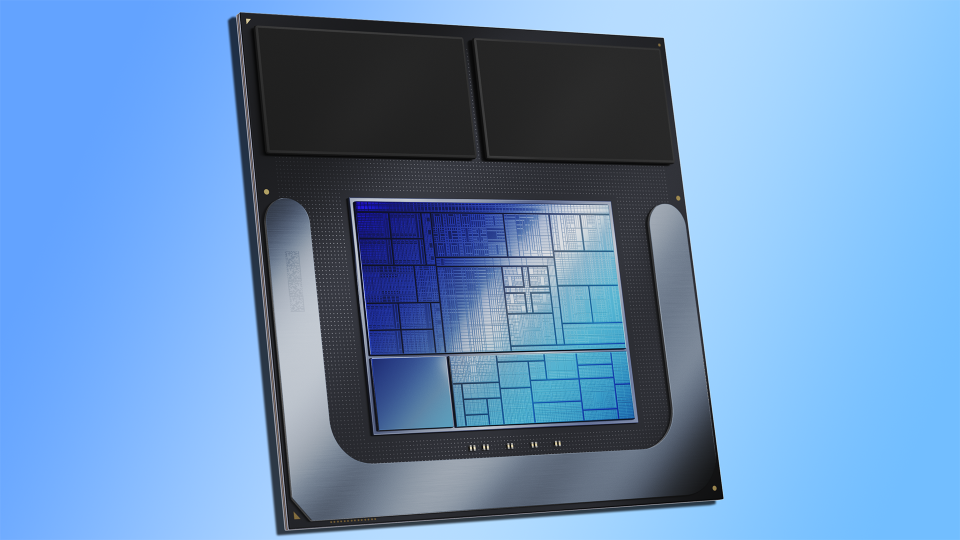
The new E-cores are built with the Skymont architecture. These are more efficient than previous cores, and importantly they're all located within one die on the chip, all within the Compute Tile. While no longer in a separate tile for low-power, these cores are still classified as living within a 'Low Power Island' complex, i.e. they are still able to function without ramping up the entire P-core compute complex.
"We are significantly ahead [of Meteor Lake] not only because we went from two cores to four in a Low Power Island context, but because these cores are so much faster than the previous generation," Hallock says.
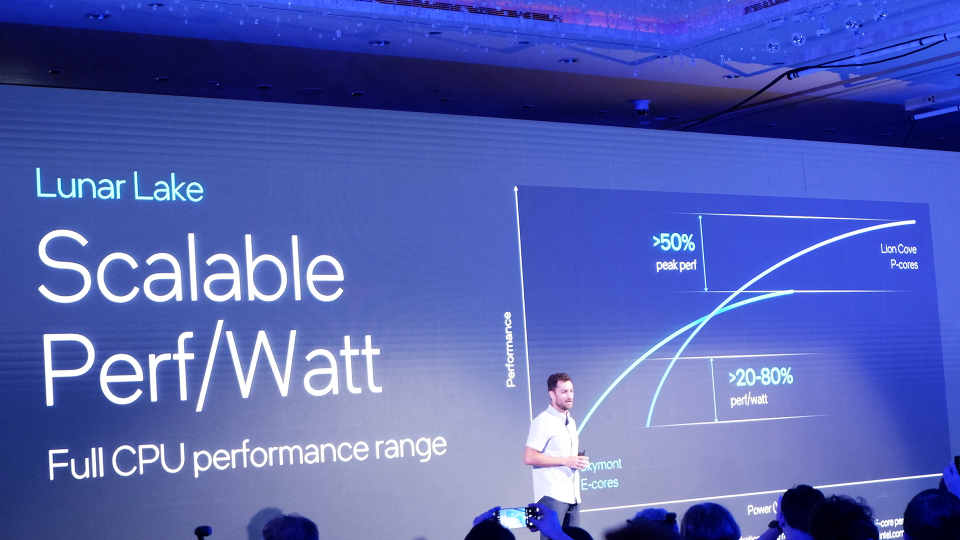
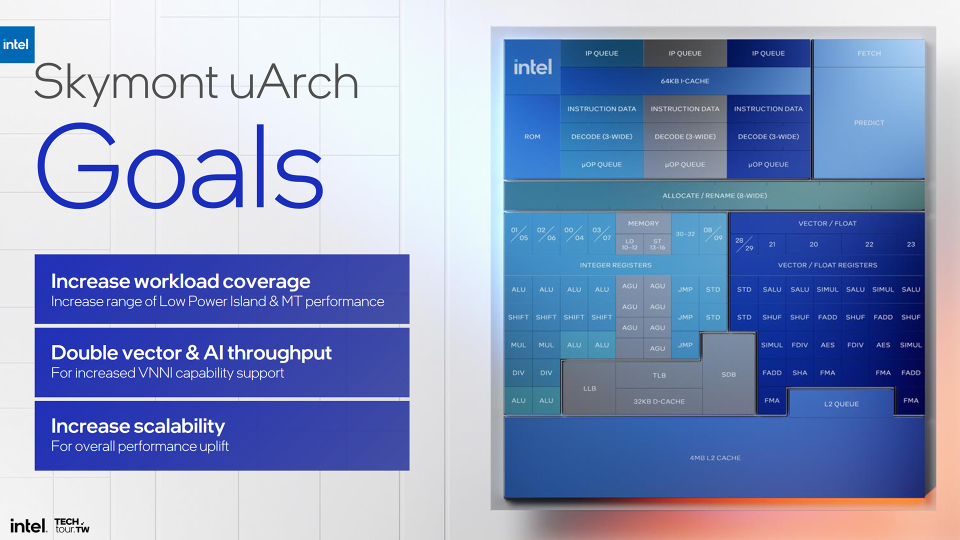
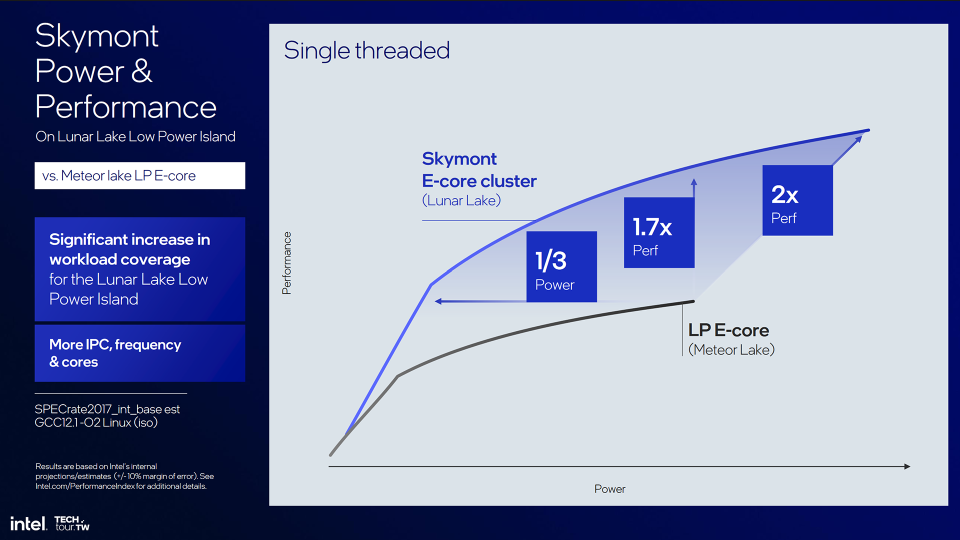
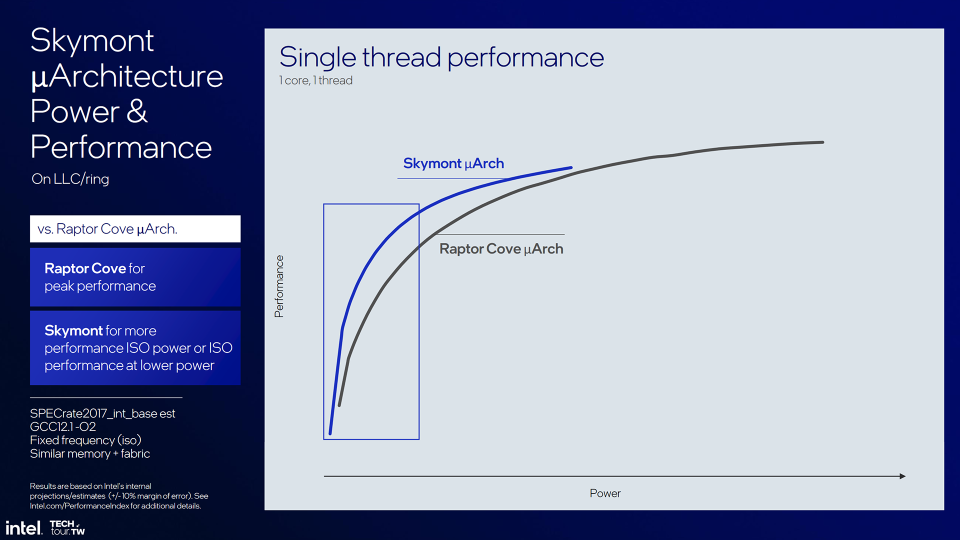
Intel has divided up its latest CPU very differently to the previous generation, too.
Lunar Lake is made up a Base Tile, on which sits a Platform Controller Tile and a Compute Tile. There's also a small filler tile, which fills in a gap and ensures stability. That's fewer tiles than Meteor Lake—Intel has combined various components into fewer physical chiplets.
The Compute Tile includes a four P-core cluster, a four E-core cluster, the new eight-core Xe2 GPU, the NOC, memory controller, display and media blocks, and the improved NPU. This tile is manufactured by TSMC on its N3B node.
The Platform Controller Tile includes connectivity and security blocks. This tile is manufactured by TSMC on its N6 node.
The Base Tile on which these two sit, using Intel's Foveros technology, is manufactured by Intel.
Yep, TSMC, the world's largest chip manufacturer, now makes most of Intel's latest processor. Though Intel is keen to point out it's still assembled and packaged in its own facilities.
Thread Director is the key to keeping these cores working effectively, and Intel is working with Microsoft to include new 'OS containment zones' to help get the most efficiency out of its latest chips. The default process with Lunar Lake, seeing as it's a mobile chip, is to hand a task to the E-cores to save power, see if that works out, and if not, throw it over to the P-cores.
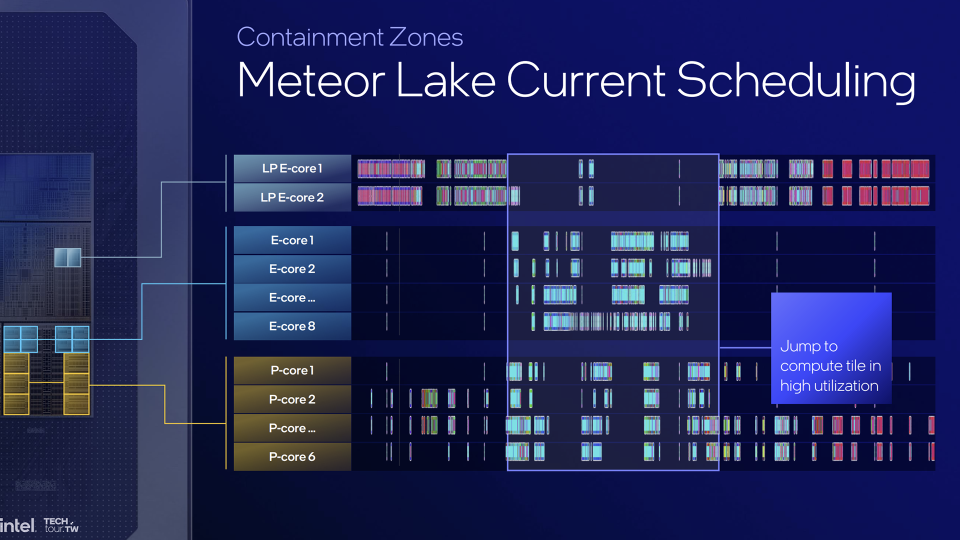
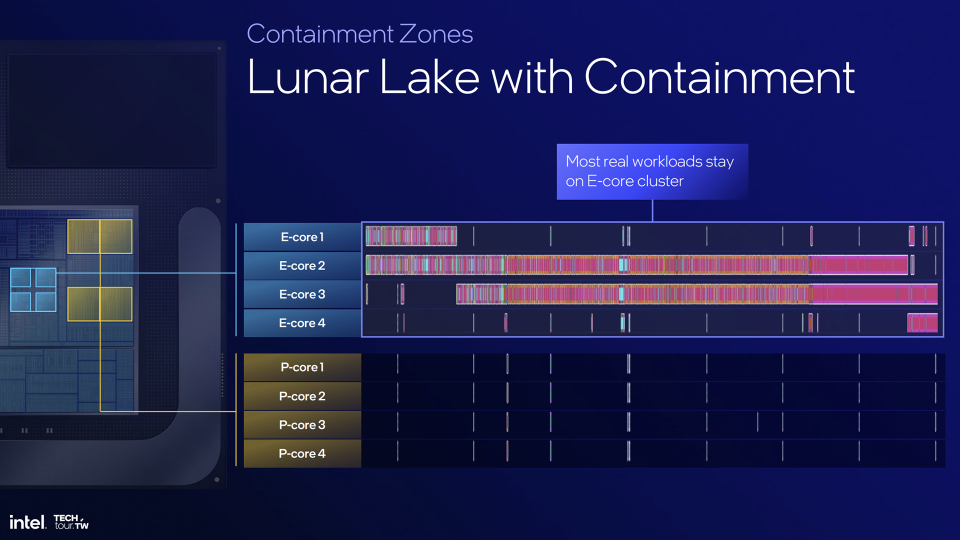
This is part of how Intel is able to claim up to a 40% overall power saving with Lunar Lake versus Meteor Lake. Though exactly how this will impact battery life day-to-day is anyone's guess—Intel says it still needs to dot the i's and cross the t's on those figures to be sure.
"We just don't know yet," Hallock says. He adds he expects Lunar Lake to be "'extraordinarily competitive on battery life."
One of the new additions to the Compute Tile is a memory side cache. This is a pretty straightforward concept: an 8 MB cache that sits besides the CPU, NPU, and display and media components, and is accessible by all to prevent any extraneous data transmissions out to more costly memory off the chip itself, thus saving power. The GPU, however, does not directly access this extra cache.
Speaking of memory, Lunar Lake includes either 16GB or 32GB of LPDDR5X memory directly on the SoC package. Another way to save on power and latency, according to Intel. This approach effectively banishes laptops with only 8GB of memory to the annals of history, too.
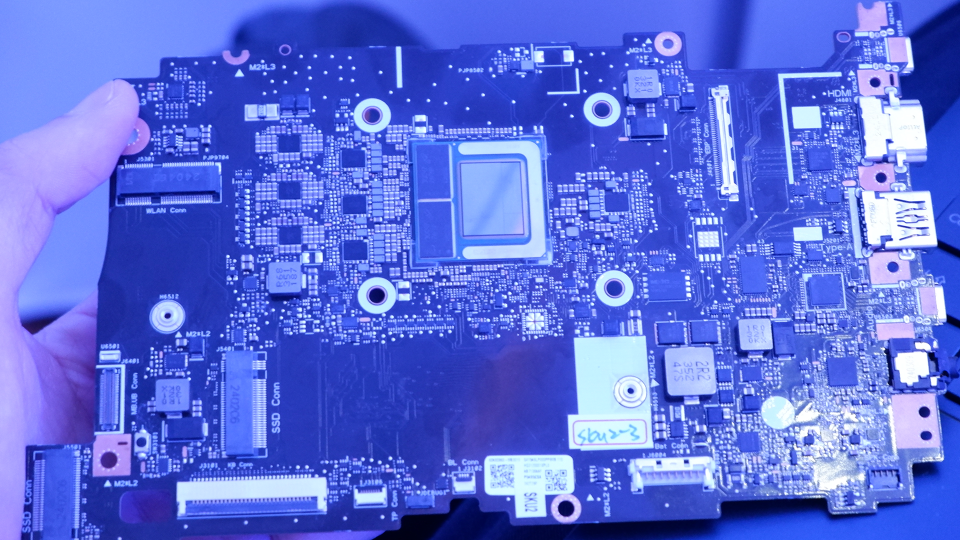
The GPU component within Lunar Lake is of particular interest to PC gamers, however, for two reasons.
First, with a maximum of eight second-generation Xe-cores, it's able to claim a 1.5x performance uplift over Meteor Lake. That's despite having the same number of Xe-cores in the top configuration.
Which brings us onto the second reason: It's able to claim an improvement for the same silicon thanks to a new and improved GPU architecture, Xe2, which will go by another name on desktop, Battlemage.
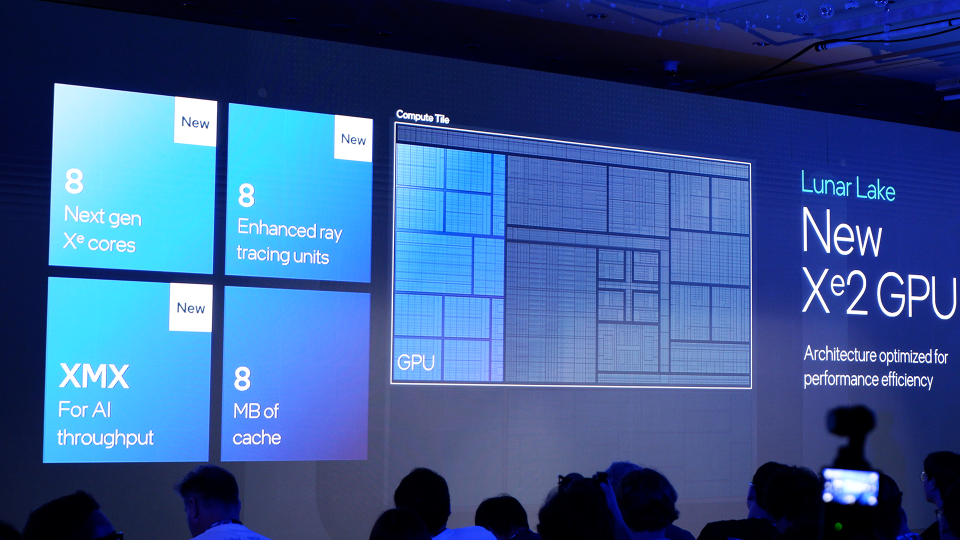
Xe2 will be the same architecture on both. There's no Xe-LPG or Xe-LP arch and another slight variation for the desktop graphics cards.
Lunar Lake is our first glimpse at what sort of performance uplift we can expect between Battlemage and Alchemist—albeit in a much smaller, low-power configuration.
A "huge leap in graphics" according to Intel's Arik Gihon.
Intel hasn't provided specific gaming benchmarks to satisfy the detail-oriented among us, however. Though it does state that drivers will remain unified across desktop and mobile GPUs.
Xe2 includes a few noteworthy updates to make gaming on a thin-and-light a bit more appealing: new optimisations for efficiency, improvements to utilisation, and larger Ray Tracing Units (RTUs). I wouldn't expect a thin-and-light to make particularly good use of ray tracing in games—that's asking a lot of eight power-limited Xe cores—though on a larger scale within a Battlemage graphics card, these should help out.
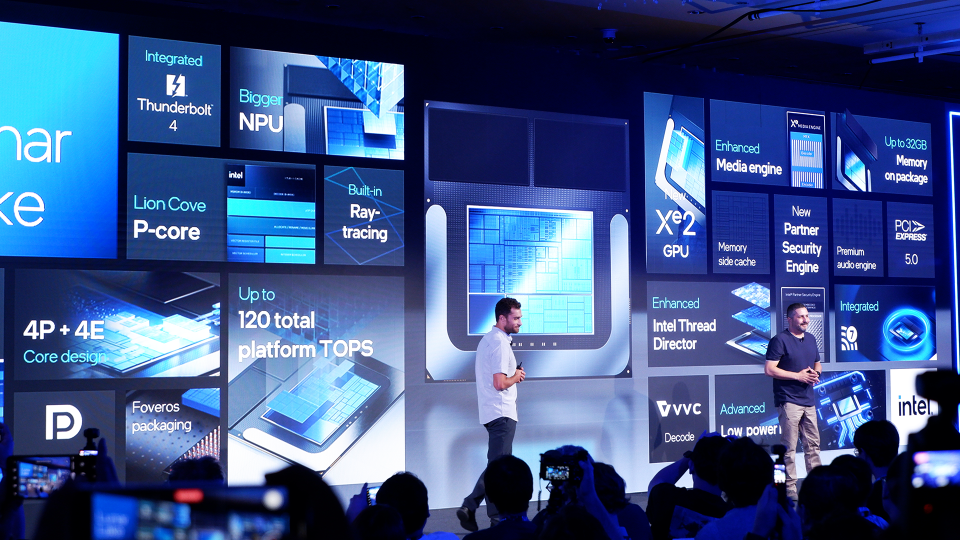
AI is the name of the game with Lunar Lake, however. To that end, Intel has included a new NPU, or Neural Processing Unit, to accelerate AI workloads including working with LLMs or any smaller AI tasks you might use. The new NPU includes six Neural Compute Engines and is able to offer double the bandwidth. Culminating in around 48 TOPs.
That's an important number. It's just over the 45 TOPs asked of Microsoft for a Copilot+ PC. On that note, Intel's Michelle Johnston Holthaus, VP and GM of the company's client division, says it's still making things official with Microsoft re. Intel-powered Copilot+ PCs, but expects them to be available around Q3/Q4.
For now, Qualcomm's latest ARM-based laptop chips will be the only option for Copilot+. Speaking of which, Gihon says he expects Lunar Lake to be "competitive" with Qualcomm's chip. Hallock says "it's not x86 vs Arm, it's how you build the chip."
To round off, there are a few other key features worth mentioning: for Wi-Fi 7 and Bluetooth, an AV1/VVC capable media engine, eDP 1.5 and DP 2.1, and support for up to three external displays.
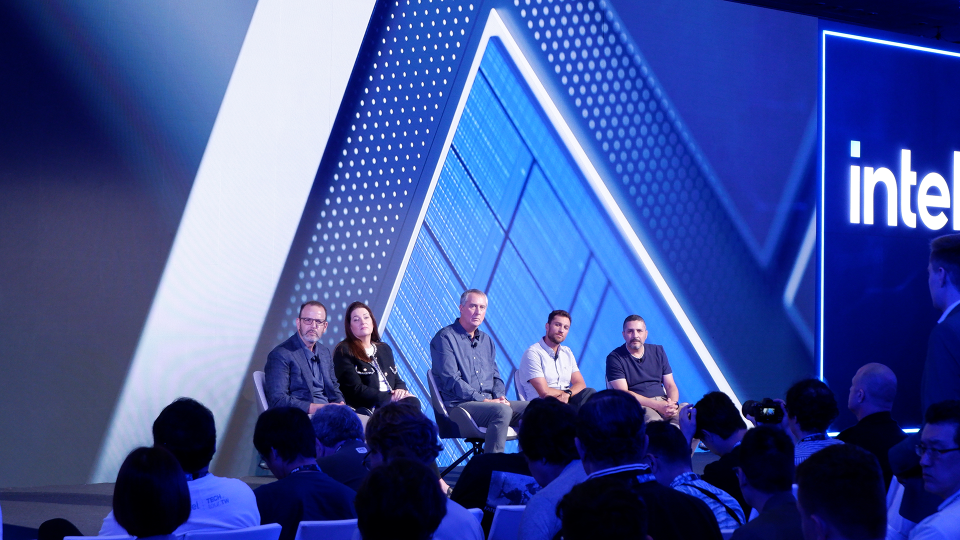
Lunar Lake is shaping up to be a decent improvement over Meteor Lake from the figures presented so far, though that's about all we have to go on. That and Holthaus telling us Intel will "win in performance, we will win in graphics, we will win in AI." I do wonder how some will react to an almost entirely TSMC-made chip with Hyper-Threading removed, as well.
How that goes down will all depend on how Lunar Lake stacks up versus the competition. On that note, Intel has kept rather quiet for now.

 Yahoo News
Yahoo News 
